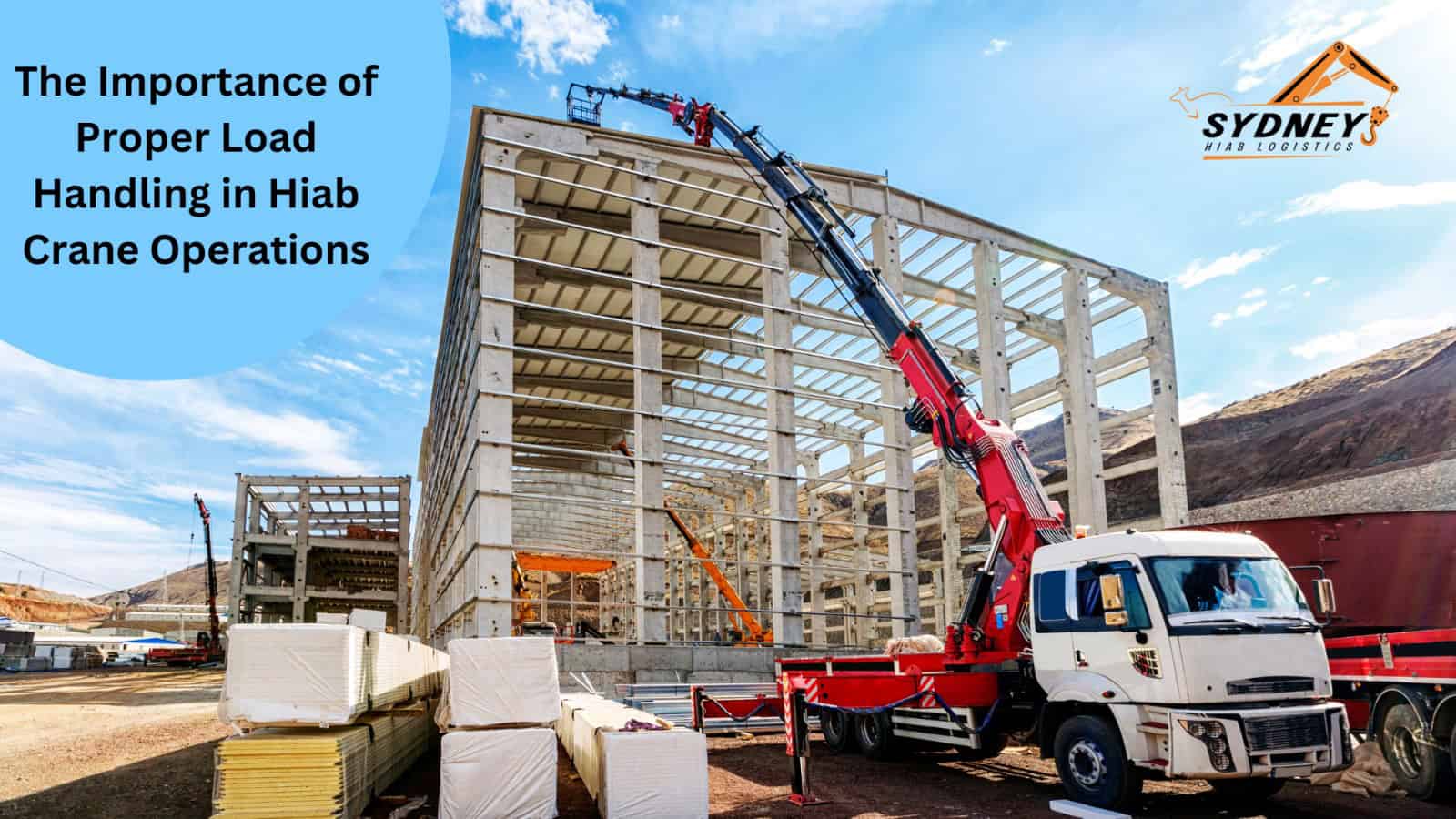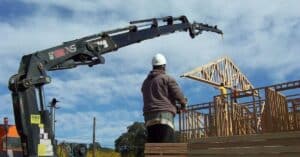Load handling is a critical aspect of crane operations, and when it comes to Hiab cranes, the importance of proper handling cannot be overstated. Hiab cranes are widely used in various industries for lifting and transporting heavy loads, making them indispensable equipment in construction, logistics, and manufacturing sectors. However, ensuring that loads are handled correctly is essential not only for safety but also for efficiency and cost-effectiveness.
What is Load Handling?
Load handling refers to the process of lifting, moving, and placing loads using cranes or other lifting equipment. It involves careful planning, precise execution, and adherence to safety protocols. Proper load handling is crucial to prevent accidents, injuries, and damage to property or equipment. Improper handling can lead to incidents such as load drops, tip-overs, or structural failures, posing significant risks to personnel and operations.
What are Hiab Cranes?
Hiab cranes, also known as truck-mounted cranes, are versatile lifting machines mounted on trucks or trailers. They are equipped with hydraulic systems that enable them to lift heavy loads with precision and efficiency. Hiab cranes find applications in various industries, including construction, forestry, waste management, and utilities. They are used for tasks such as loading and unloading cargo, erecting structures, and handling materials in confined spaces.
The Importance of Proper Load Handling in Hiab Crane Operations
Safety Considerations
Safety is paramount in crane operations, and proper load handling is essential to minimize risks. Hiab crane operators must undergo comprehensive training and certification to ensure they possess the necessary skills and knowledge to operate the equipment safely. They must also adhere to safety guidelines and procedures, including pre-operational checks, load capacity limits, and proper rigging techniques. By prioritizing safety, companies can protect their workers and assets from accidents and liabilities.
Efficiency and Productivity
Proper load handling enhances efficiency and productivity in Hiab crane operations. When loads are handled correctly, tasks can be completed more quickly and smoothly, minimizing downtime and delays. Operators can maximize the use of crane capacity and reach, optimizing workflows and resource utilization. Moreover, efficient load handling reduces the likelihood of errors or rework, allowing projects to stay on schedule and within budget.
Cost-Effectiveness
In addition to safety and productivity benefits, proper load handling offers long-term cost savings for businesses. By avoiding accidents, damages, and downtime associated with improper handling, companies can reduce repair and replacement costs for equipment and infrastructure. Furthermore, implementing preventive maintenance programs and investing in quality equipment contribute to extended service life and lower operating expenses over time. Ultimately, prioritizing proper load handling leads to a more sustainable and profitable operation.
Safety Measures for Load Handling
To ensure safe and efficient Hiab crane operations, companies should implement comprehensive safety measures, including:
- Training and Certification: Operators must undergo thorough training and certification programs. This helps them develop the necessary skills and knowledge in load handling techniques, equipment operation, and safety protocols.
- Equipment Maintenance: Regular inspection and maintenance of Hiab cranes and associated equipment are vital. This ensures they’re always in optimal working condition. Addressing any issues promptly helps prevent breakdowns or malfunctions during operations.
- Proper Planning and Assessment: Before lifting operations, thorough risk assessments and job planning should be conducted. Factors such as load weight, size, shape, and environmental conditions must be considered. This helps determine the most appropriate handling methods and safety precautions to be taken.
How to Enhance Efficiency and Productivity
Companies can take several steps to improve efficiency and productivity in Hiab crane operations:
Utilize Advanced Technology: Investing in modern crane technologies can greatly enhance operations. Remote monitoring systems allow operators to track crane performance and detect any issues in real-time. Digital load indicators provide accurate information about the weight of the load, ensuring safe lifting practices. Automated controls streamline processes and reduce the need for manual intervention, increasing efficiency and reducing the risk of errors.
Optimize Workflows: Implementing efficient workflows and logistics strategies is essential for maximizing crane utilization. By carefully planning and coordinating tasks, companies can minimize idle time and ensure that cranes are used to their full potential. This involves scheduling lifts efficiently, prioritizing tasks based on urgency, and coordinating with other departments and stakeholders to synchronize activities. By optimizing workflows, companies can improve productivity and reduce costs associated with downtime and inefficiencies.
Cost-Effectiveness of Proper Load Handling
Proper load handling plays a significant role in cost-effectiveness for businesses in various ways:
Avoiding Accidents and Damages: By ensuring proper load handling practices, companies can significantly reduce the risk of accidents, injuries, and property damage. This helps in minimizing repair costs associated with damaged equipment or structures. Moreover, by preventing accidents, companies can avoid potential legal liabilities and insurance claims, thereby saving on insurance premiums and legal expenses. Overall, investing in proper load handling practices upfront can lead to substantial cost savings in the long run.
Long-Term Savings: Maintaining equipment in good condition through proper load handling practices leads to long-term savings. By adhering to maintenance schedules and preventive measures, companies can extend the lifespan of their equipment and reduce the frequency of repairs. This results in lower maintenance, repair, and replacement expenses over time. Additionally, by preventing premature wear and tear on equipment, companies can avoid costly downtime and disruptions to operations, further contributing to cost-effectiveness.
Conclusion
In conclusion, proper load handling is essential for ensuring the safety, efficiency, and cost-effectiveness of Hiab crane operations. By prioritizing safety measures, enhancing operational efficiency, and minimizing risks, companies can optimize their crane operations and achieve better outcomes. Investing in training, maintenance, and technology enables businesses to maximize the benefits of proper load handling while minimizing potential liabilities and expenses.
Ready to transform your logistics with top-notch Hiab crane services? Contact Sydney Hiab Logistics today for efficient and reliable solutions.
FAQs
- What are the common risks associated with improper load handling?
Improper load handling can lead to accidents such as load drops, tip-overs, or structural failures, posing risks to personnel and property.
- How can operators ensure safety during Hiab crane operations?
Operators should undergo comprehensive training, adhere to safety protocols, and conduct pre-operational checks to minimize risks.
- Are there any specific regulations governing load handling in crane operations?
Yes, various regulations and standards govern load handling, including weight limits, rigging requirements, and safety guidelines.
- What role does proper planning play in ensuring efficient load handling?
Proper planning involves assessing risks, selecting appropriate equipment and techniques, and coordinating tasks to optimize efficiency and safety.
- How can businesses measure the cost-effectiveness of proper load handling?
Businesses can measure cost-effectiveness by tracking maintenance expenses, downtime costs, and savings achieved through accident prevention and efficiency improvements.




